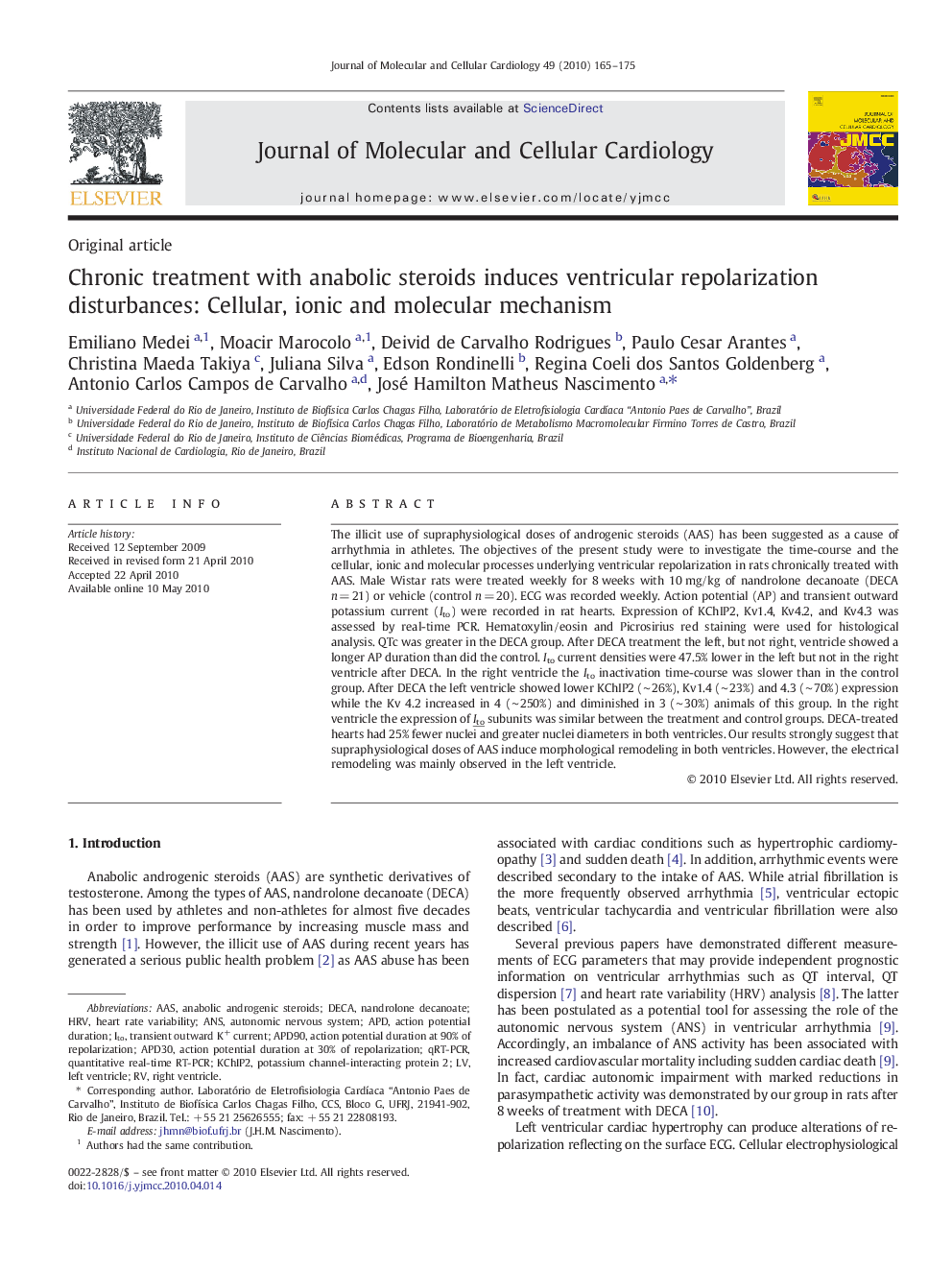| Article ID | Journal | Published Year | Pages | File Type |
|---|---|---|---|---|
| 2191059 | Journal of Molecular and Cellular Cardiology | 2010 | 11 Pages |
The illicit use of supraphysiological doses of androgenic steroids (AAS) has been suggested as a cause of arrhythmia in athletes. The objectives of the present study were to investigate the time-course and the cellular, ionic and molecular processes underlying ventricular repolarization in rats chronically treated with AAS. Male Wistar rats were treated weekly for 8 weeks with 10 mg/kg of nandrolone decanoate (DECA n = 21) or vehicle (control n = 20). ECG was recorded weekly. Action potential (AP) and transient outward potassium current (Ito) were recorded in rat hearts. Expression of KChIP2, Kv1.4, Kv4.2, and Kv4.3 was assessed by real-time PCR. Hematoxylin/eosin and Picrosirius red staining were used for histological analysis. QTc was greater in the DECA group. After DECA treatment the left, but not right, ventricle showed a longer AP duration than did the control. Ito current densities were 47.5% lower in the left but not in the right ventricle after DECA. In the right ventricle the Ito inactivation time-course was slower than in the control group. After DECA the left ventricle showed lower KChIP2 (∼ 26%), Kv1.4 (∼ 23%) and 4.3 (∼ 70%) expression while the Kv 4.2 increased in 4 (∼ 250%) and diminished in 3 (∼ 30%) animals of this group. In the right ventricle the expression of Ito subunits was similar between the treatment and control groups. DECA-treated hearts had 25% fewer nuclei and greater nuclei diameters in both ventricles. Our results strongly suggest that supraphysiological doses of AAS induce morphological remodeling in both ventricles. However, the electrical remodeling was mainly observed in the left ventricle.
